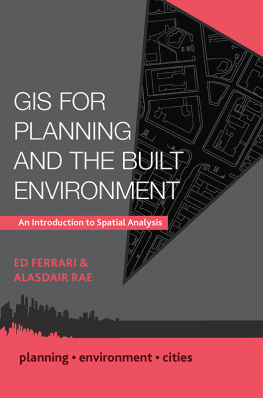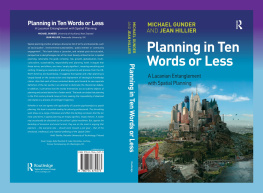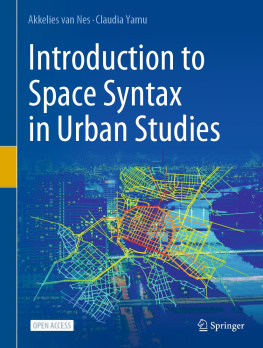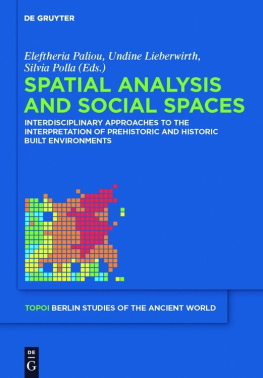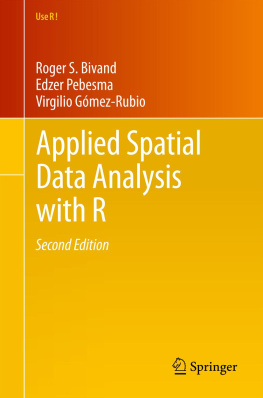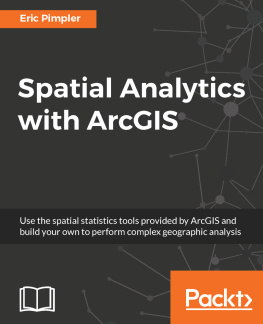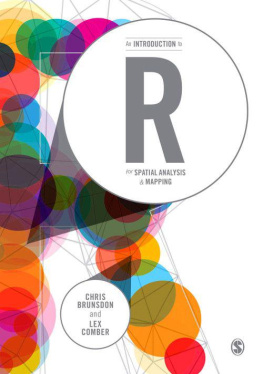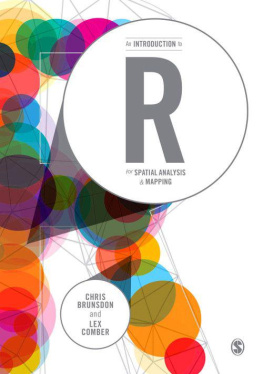GIS for Planning and the Built Environment is a really interesting book with a unique and refreshing approach to GIS. This text provides an effective cross-sectional overview of GIS and spatial analysis concepts and refers to many real-world examples which should be useful to planners. The book has a universal appeal as it focuses on a wide range of GIS principles that can be implemented across various planning systems.
Les Dolega, University of Liverpool, UK
GIS for Planning and the Built Environment is a brilliant take on the current state of Geographic Information Systems across the globe and is a must-read for planners, students and GIS technicians. Ferrari and Raes ability to expertly capture and describe the history and future of Geographic Information Systems seems effortless. A quick and engaging read, this book would make an excellent textbook for college-level GIS and/or Planning classes. I highly recommend it!
Tony Giarrusso, Georgia Institute of Technology, USA
This book walks the reader through the thought processes that are needed to go from having a bit of geographical data to analysing and presenting it in a clear and effective way. The strength of this book is that provides a toolkit of approaches and applications which are independent of technology, software and location. It is also written in a user friendly style that will make it a useful text for many students, practitioners and professionals in the fields of GIS, planning and the built environment.
Ruth Hamilton, University of Sheffield, UK
GIS for Planning and the Built Environment provides a why to guide to the potential of GIS, accompanied by contemporary examples and applications. It is the perfect text for students accessing GIS for the first time as it showcases the potential and recent explosion of demand for geo-visualisation, communication and accessibility of spatial data.
Damien Mansell, University of Exeter, UK
This book expertly weaves together the applied and the academic, the conceptual and the technical. It explains in a very clear manner a range of spatial analytical techniques that can be applied to evidence-based planning in an increasingly complex and nuanced world. It will serve as an excellent text in upper-level undergraduate or graduate-level courses.
Siqing Chen, University of Melbourne, Australia
This book represents a good first step towards learning the use of GIS methods for planners. I find it useful both for students and for professionals within the field, with its focus on applied methods and with many relevant practical examples. Im particularly pleased that network analysis has been included here, a topic applicable for planning that I have missed in many of the generic GIS textbooks available elsewhere.
Yngve Karl Fryen, Norwegian University of Science and Technology, Norway
GIS and planning have both undergone substantial change in recent decades the authors are ideally placed to traverse these developments and to provide a much needed update on the relationship between the two fields. They tackle the hype surrounding GIS in order to demonstrate its relevance to contemporary urban planning processes and problems. All too often GIS lecturers may be unfamiliar with the best means to approach these issues with planning students, while their planning colleagues may struggle to keep abreast of GIS. This book successfully fills this gap in an engaging and accessible style and with a range of well-chosen examples.
Alistair Geddes, University of Dundee, UK
Series Editors: Yvonne Rydin and Ben Clifford*
The context in which planning operates has changed dramatically in recent years. Economic processes have become increasingly globalised and economic fortunes have fluctuated. Not only have administrations in various countries changed, but old ideologies have been swept away and new ones have tentatively emerged. A new environmental agenda has prioritised the goal of sustainable development, requiring continued action at international, national and local levels.
Cities are today faced with new pressures for economic competiveness, greater accountability and participation, improved quality of life for citizens, and global environmental responsibilities. These pressures are often contradictory and create difficult dilemmas for policy-makers, especially in the context of fiscal austerity.
In these changing circumstances, planners, from many backgrounds, in many different organisations, have come to re-evaluate their work. They have to engage with actors in government, the private sector and non-governmental organisations in discussions over the role of planning in relation to the environment and cities. The intention of the Planning, Environment, Cities series is to explore the changing nature of planning and contribute to the debate about its future.
This series is primarily aimed at students and practitioners of planning and such related professions as estate management, housing and architecture as well as those in politics, public and social administration, geography and urban studies. It comprises both general texts and books designed to make a more particular contribution, in both cases characterised by: an international approach; extensive use of case studies; and emphasis on contemporary relevance and the application of theory to advance planning practice.
Published
Philip Allmendinger
Planning Theory (3rd edn)
Luca Bertolini
Planning the Mobile Metropolis
Jon Coaffee and Peter Lee
Urban Resilience: Planning for Risk, Crisis and Uncertainty
Chris Couch
Urban Planning: An Introduction
Ed Ferrari and Alasdair Rae
GIS for Planning and the Built Environment: An Introduction to Spatial Analysis
Ruth Fincher and Kurt Iveson
Planning and Diversity in the City: Redistribution, Recognition and Encounter
Cliff Hague, Euan Hague and Carrie Breitbach
Regional and Local Economic Development
Patsy Healey
Collaborative Planning (2nd edn)
Patsy Healey
Making Better Places: The Planning Project in the 21st Century
Simon Joss
Sustainable Cities: Governing for Urban Innovation
Ted Kitchen
Skills for Planning Practice
Ali Madanipour
Urban Design, Space and Society
Peter Newman and Andrew Thornley
Planning World Cities (2nd edn)
Michael Oxley
Economics, Planning and Housing
Dory Reeves
Management Skills for Effective Planners
Yvonne Rydin
Urban and Environmental Planning in the UK (2nd edn)
Mark Tewdwr-Jones
Spatial Planning and Governance: Understanding UK Planning
Geoff Vigar, Patsy Healey, Angela Hull and Simin Davoudi
Planning, Governance and Spatial Strategy in Britain: An Institutionalist Analysis
Iain White
Environmental Planning in Context
Other titles planned include
International Planning Studies
Contemporary Planning Practice
* Andrew Thornley was series co-editor with Yvonne Rydin up to his retirement from the role in January 2017.



